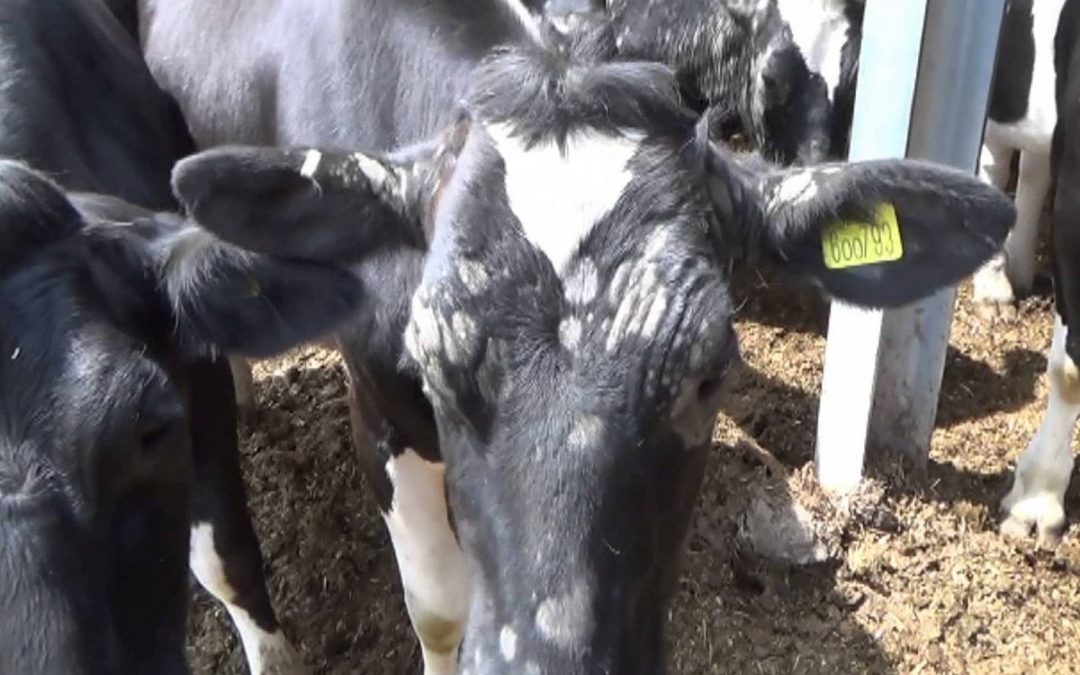What is Ringworm?
Ringworm is a common fungal infection of livestock that is caused by several different organisms called dermatophytes. The most common type to affect cattle is called Trichophyton verrucosum.
How is ringworm transmitted?
The organisms that cause ringworm are very hardy and persist in the environment for long periods of time, even after there is no direct animal contact. They can survive in bedding, soil, and on inanimate objects (posts/halters/neck straps) for many months. Because of this, ringworm is extremely contagious and minimal contact with the organism can infect animals and humans.
Why is Ringworm a concern at local and county fairs?
Ringworm is considered a zoonotic disease. This means that it is contagious between animal species as well as to people who come in contact with it. While farmers and ranchers may be familiar with ringworm and avoid touching the lesions, visitors of the fairs are an unsuspecting population. We have a duty to keep the general public free from this disease while also attempting to not spread it to other animals visiting the fair.
Where are ringworm lesions located and what do they look like?
Lesions frequently occur around the eyes, ears, muzzle, neck and trunk of animals. They are typically round/oval areas of crusted skin combined with hair loss. Occasionally, the lesions may have a raised look to them due to oozing and may have a secondary bacterial skin infection underlying the crust.
How long is ringworm contagious?
Ringworm lesions can persist for weeks to many months. During the entire time that the lesions are visible, they are considered contagious. At all stages of the ringworm disease process, small hair follicles are present (including underneath the crusted lesions). The old age saying that states, “If there’s hair growing through, it’s not contagious” is simply false. This is because on visual inspection it is impossible to determine if thin hair growth is due to hair falling out or hair growing back in. Tests have shown that animals recovering from ringworm with spotty hair growth will still culture positive for organisms that cause ringworm. Only animals without visually detectable lesions are considered no longer contagious.
If some lesions are healed but other spots are still present, is my animal still contagious?
Yes. Due to the prolonged disease process, individual ringworm lesions can be at different stages of healing depending on when the area was exposed to ringworm. Lesions can also heal at different rates, depending on the level of exposure. Another factor that affects healing rates is whether or not the animal has developed a secondary bacterial skin infection, which can slow the ringworm healing process.
How do I treat ringworm?
Ringworm is often self-limiting, meaning it will go away on its own without any treatment. However, if ringworm is present on an animal that is destined to attend a fair or show, treatment will need to be initiated immediately. As mentioned earlier, ringworm can persist for weeks to many months even with treatment. Therefore, it is not a disease that can be cleared up quickly in just the week prior to the fair. Consult with your herd veterinarian for strategies and treatment options.

